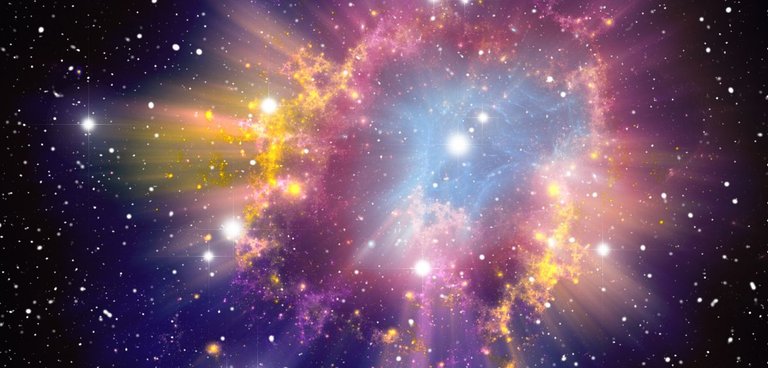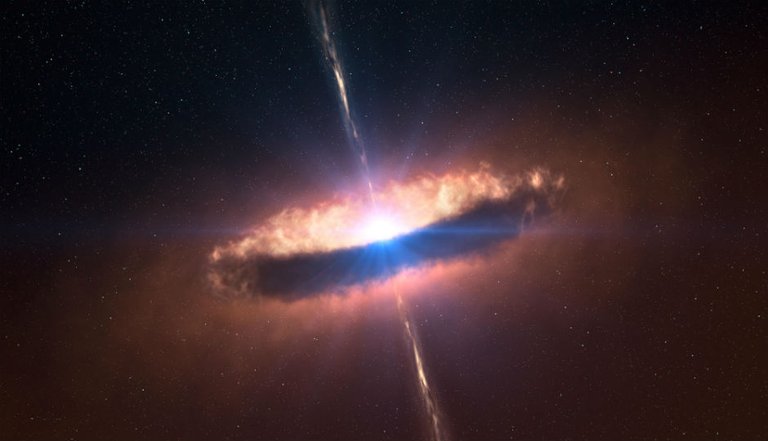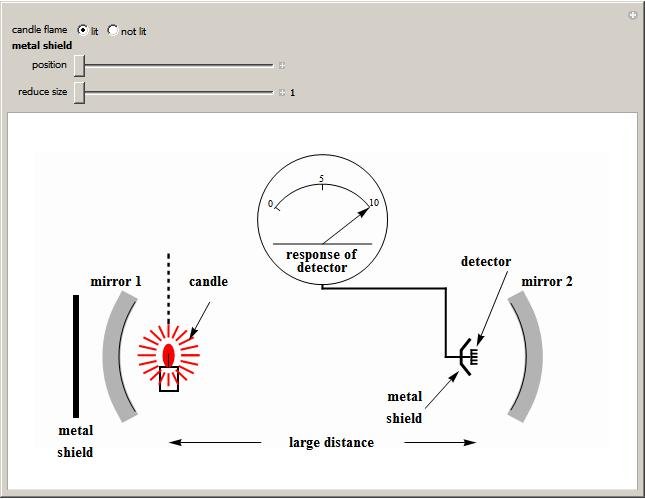
Ten and a half billion years ago, a star exploded in a hypernova explosion when the universe was less than 4 billion years old! The supernovae light only arrived on Earth 10.5 billion years later and was first photographed in August 2016.
Supernova from the young universe
When astronomers discovered the transient light that turned out from this supernova explosion, they retraced the observational data until March 2016 to find out if this supernova had been seen before. Apparently, there are indications that this supernova has started to appear since March 9, 2016.
The starburst, later named DES16C2nm, was observed in the Dark Energy Survey program to map millions of distant galaxies over an area of 5000 (°) 2 or 1/8 sky area. The goal is to study the mysterious energy that speeds up the expansion of the universe. Observing such a large area of the sky, it is not surprising that we will find so many supernovas from time to time.
DES16C2nm reached its brightest peak in September 2016 and subsequently dimmed until it could no longer be observed in January 2017.
To obtain information from supernovae. What must be known is the brightness. And of course, the brightness will be closely related to the distance. The way of course with the analysis of the resulting light spectrum during observation. This important information is only known in October 2017 through observations with the Hubble Telescope, Keck Telescope in Hawaii, as well as the Very Large Telescope and Magellan Telescope in Chile.
Something interesting. The spectrum of DES16C2nm shows that this supernova undergoes a redshift which gives an indication that the object is moving away rapidly. The result, it is known that the light from the supernova has traveled 10.5 billion years to reach the observer on Earth. This travel time is also a distance of 10.5 billion light-years from Earth.
That's the distance. From the observation of supernova brightness, it is also known that DES16C2nm has a brightness 100 times brighter than the supernova that we know. That means, DES16C2nm found is a rare supernova from the Superluminous Supernova or SLSN class or hypernova!
Superluminous Supernova
A supernova or a star explosion occurs when a massive star has run out of fuel and ends up with a core collapse. For massive stars that do not end as black holes, collapsed cores will bloom suddenly and trigger an explosion that causes shock waves. The general explosion releases enormous energy, equivalent to all the energy that the Sun emits during its lifetime! This event is what we know as Supernova.
But, supernovas also have different types based on the brightness. Type I and Type II Supernovae, with Type I can achieve a magnitude of -16 magnitude while type II, 2 the magnitude is less. SLSN has a very bright characteristic with a brightness exceeding -21 magnitude. Well, the DES16C2n supernova is known to have a magnitude -22 magnitudes!
Superluminous Supernova like this was first discovered in 1998. However, SLSN has first confirmed its existence in 2003 when the discovery of GRB 030329 gamma-ray explosion in Leo constellation which is also a supernova and named SN 2003dh. This event marks the death of a star that is 25 times more massive than the Sun.
DES16C2nm is also part of a rare type supernova whose brightness can exceed the brightest brightness of the galaxy. So what causes an exploding star to be as bright as it is?
According to the SLSN astronomers are formed when the core of a collapsed star forms a compact object known as a neutron star. Allegedly, the former is not just a neutron star but a magnetar, neutron stars that have a magnetic field 100 trillion times stronger than Earth. The interaction of matter that collapses into the magnetar further strengthens the starburst and produces a larger energy burst that we later know as the SLSN type.
But, there is another possibility. SLSN is formed from the explosion of an unstable starter pair or matter ejected when the exploding star collides with the gas present in its parent galaxy and causes an increase in brightness.
The problem is, right now we do not have many Superluminous Supernova examples of this SLSN type. Therefore, any discovery of this type of supernova will greatly help astronomers to understand it.
The advantage of this type of supernova, it is the ideal type to trace the object with a large redshift. Some candidates with large redshift have been found on the SLSN type, and DES16C2nm is one of them.
Astronomers also did not find the presence of hydrogen gas on the DES16C2nm spectrum. Thus, the star that became the forerunner of the supernova has thrown most of its outer layer before the explosion occurred. From the DES16C2nm ultraviolet radiation spectrum, observers can also get information on how much metal is formed in the explosion and also its temperature. From this information, we can know the cause of the cosmic explosion and understand what happened billions of years ago. Especially to trace the distant galaxy is not easy because it is very dim.
Detecting a Candle Flame
The discovery of DES16C2nm also has significance. Moreover, the brightness is extraordinarily bright beyond the Type Ia Supernova that can usually reach -19 magnitude. Type Ia supernova is an event that is made wax determinant in cosmology, since the actual brightness is known and only changes by distance or if blocked by dust.
The discovery of a supernova super-brightness that is 100 times brighter than Supernova Type Ia clearly becomes its own advantage. SLSN can be a new long-range candle candidate for objects that are at a great distance.
But, SLSN type supernova found not many. Therefore, to make SLSN a wax determinant of distance, there needs to be a massive hybrid hunt to see the pattern of light emitted and its brightness. If we have enough examples, then SLSN type supernovae can be standardized as wax spacers.
Not easy, but very possible to do.
The Dark Energy Survey will still be monitoring the sky for another year. In addition, there is a Large Synoptic Survey Telescope that will map the entire area of the southern sky and began operating in 2019. In addition, there is a telescope Wide-Field Infrared Survey Telescope (WFIRST) NASA that should be a candidate SLSN observers. Unfortunately, this one telescope appears to be in danger of not being operational due to funding issues being nullified by the American government. Another future telescope that is expected to conduct the survey is ESA's EUCLID telescope that will be launched in 2021.
With future telescopes, astronomers who discovered DES16C2nm will be able to observe objects that are farther than 12 billion light-years away. That means we will look to the past of the universe when everything is still very different.
Reference :
- http://www.syfy.com/syfywire/a-superluminous-supernova-seen-more-than-10-billion-light-years-away
- https://en.wikipedia.org/wiki/History_of_supernova_observation
- http://www.dailymail.co.uk/sciencetech/article-5409481/Supernova-10-5-BILLION-years-ago-oldest-ever.html
- https://www.space.com/39756-most-distant-supernova-hypernova-des16c2nm.html
- https://phys.org/news/2018-02-astronomers-reveal-secrets-distant-supernova.html




Hi, I found some acronyms/abbreviations in this post. This is how they expand:
Thanks @whalhesa for this article. It also suprises me to learn about objects we observe at very high red shift at the beginning of the Universe. Thanks for bringing this to my attention.
Have a good day, and see you around.
@physics.benjamin
You are welcome @physics.benjamin.
see you too.......
Have a nice day
Congratulations! This post has been upvoted from the communal account, @minnowsupport, by whalhesa from the Minnow Support Project. It's a witness project run by aggroed, ausbitbank, teamsteem, theprophet0, someguy123, neoxian, followbtcnews, and netuoso. The goal is to help Steemit grow by supporting Minnows. Please find us at the Peace, Abundance, and Liberty Network (PALnet) Discord Channel. It's a completely public and open space to all members of the Steemit community who voluntarily choose to be there.
If you would like to delegate to the Minnow Support Project you can do so by clicking on the following links: 50SP, 100SP, 250SP, 500SP, 1000SP, 5000SP.
Be sure to leave at least 50SP undelegated on your account.